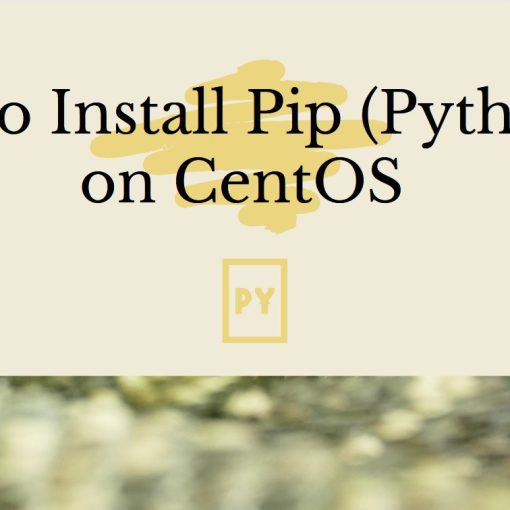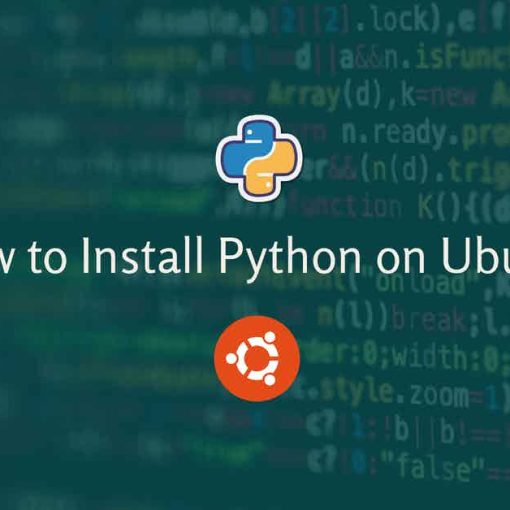In this tutorial, we’re going to show you how to install Python (the latest version) on CentOS with step-by-step instructions. This tutorial includes instructions for Python 3.10 and Python 3.11 on CentOS 7 and CentOS 8.
Alternative tutorial: How to install Python on Ubuntu.
Prerequisites
This is what you’ll need for this tutorial:
- Root access or a user with sudo privileges
- SSH access to the server, or just use Terminal if you’re on a desktop
- A CentOS system. This tutorial will work for CentOS 7, CentOS 8, AlmaLinux, Rocky Linux, and other RHEL-based distros.
- If you need a server, you can get one from Linode, or choose another Linux VPS provider.
On some systems, Python may already be installed. To check what version of Python you have installed (if any), run the following commands:
python -V
python3 -V
If Python is installed, one or both commands will give you an output of the version that’s installed.
Recommended read: Best Linux Distro for Programming
Default Versions of Python in CentOS
Depending on when you’re reading this or what version you’re using, the version that you have installed by default or the version that’s available in the CentOS repo might be different.
For CentOS 7:
- Python 2.7.5 is installed by default. That version has reached its EOL years ago, so you should upgrade ASAP.
- Python 3.6.8 is the latest version available in the CentOS 7 repos. 3.6 reached its EOL in Dec 2021, so you should upgrade ASAP.
For CentOS 8:
- Python isn’t installed by default.
- Python 3.9.6 is the latest version available in the CentOS 8 repos. The EOL of Python 3.9.6 is Oct 2025, so you can use that version. To install it, just run
yum install python39and that’s it. If you want to install Python 3.10 or 3.11, follow the tutorial below.
How to Install Python 3.10 on CentOS
Now, onto our tutorial on how to install Python 3.10 on CentOS (any version)
Step 1: Update CentOS
The first step, as always, is to update your system with the following command:
yum update
Step 2: Install necessary packages
Next, we need to install some packages:
yum install openssl-devel bzip2-devel libffi-devel
yum groupinstall "Development Tools"
Step 3: Download Python
First, get the download link for the version of Python that you plan on installing from this page. In this tutorial, we’ll be using Python 3.10.2.
Download the file with the command below:
wget https://www.python.org/ftp/python/3.10.2/Python-3.10.2.tgz
And extract the archive with:
tar -xzf Python-3.10.2.tgz
Step 4: Install Python 3.10
To install the Python version you just downloaded, cd into the directory:
cd Python-3.10.2
Then, run the following command:
./configure --enable-optimizations
And finally, compile Python (without replacing the default version):
make altinstall
This process might take a while. After it’s done, you can verify if you installed Python 3.10.2 with the following command:
python3.10 -V
Which should return the exact version of Python (3.10.2)
How to Install Python 3.11 on CentOS
The instructions are pretty similar to 3.10.
Step 1: Update CentOS
The first step, as always, is to update your system with the following command:
yum update
Step 2: Install necessary packages
Next, we need to install some packages:
yum install openssl-devel bzip2-devel libffi-devel
yum groupinstall "Development Tools"
Step 3: Download Python
First, get the download link for the version of Python that you plan on installing from this page. In this tutorial, we’ll be using Python 3.11.0a4
Download the file with the command below:
wget https://www.python.org/ftp/python/3.11.0/Python-3.11.0a4.tgz
And extract the archive with:
tar -xzf Python-3.11.0a4.tgz
Step 4: Install Python 3.11
To install the Python version you just downloaded, cd into the directory:
cd Python-3.11.0a4
Then, run the following command:
./configure --enable-optimizations
And finally, compile Python (without replacing the default version):
make altinstall
This process might take a while. After it’s done, you can verify if you installed Python 3.11.0a4 with the following command:
python3.11 -V
Which should return the exact version of Python (3.11.0a4).
And that’s it. You’ve now installed the latest version of Python on CentOS.




18 thoughts on “How to Install Python 3.10 (or 3.11) on CentOS”
How would I go about uninstalling 3.10, especially if done with altinstall? I was going through the makefile and i don’t think this was in it
If I decide to make python 3.10 my default python after doing make altinstall how would I go about it?
Also when looking through the makefile, I didn’t get to see anything for uninstall. How would I go about uninstalling 3.10 after make altinstall?
pip does not work following the instructions above.
When I issue the command ‘pip3 install websockets’
I get this error:
Could not fetch URL https://pypi.org/simple/websockets/: There was a problem confirming the ssl certificate: HTTPSConnectionPool(host=’pypi.org’, port=443): Max retries exceeded with url: /simple/websockets/ (Caused by SSLError(“Can’t connect to HTTPS URL because the SSL module is not available.”)) – skipping
Got the same issue
mee too have the same issue.. Did anyone resolve it?
I tried running the exact steps from the tutorial again and installed pip3 and websockets. It all worked fine:
9 yum install epel-release 10 yum install python3-pip 11 pip3 install websockets 12 historyCan you double-check if you’ve installed “openssl-devel”?
This does not work, at least not on CentOS 7. If you perform the steps advised, it will appear to install, but all you need to do is run “pip install –upgrade pip” and you’ll get errors that OpenSSL is not installed. This is the issue I was trying to resolve when I found this page. These instructions are incomplete.
I should have mentioned: thanks to the earlier poster for suggesting python3-pip. Using pip version 3.6 might do the trick for us, but it doesn’t address the main issue of getting pip 3.10 to work (we’re trying 3.10.4 and 3.10.5).
My Error:
———————————————————-
WARNING: pip is configured with locations that require TLS/SSL, however the ssl module in Python is not available.
WARNING: Retrying (Retry(total=4, connect=None, read=None, redirect=None, status=None)) after connection broken by ‘SSLError(“Can’t connect to HTTPS URL because the SSL module is not available.”)’: /simple/pip/
What fixed my issue:
———————————————————-
sudo yum install openssl11 openssl11-devel
mkdir /usr/local/openssl11
cd /usr/local/openssl11
ln -s /usr/lib64/openssl11 lib
ln -s /usr/include/openssl11 include
Then proceed with the original steps in this guide, changing the “./configure –enable-optimizations” to point to the new OpenSSL:
./configure –with-openssl=/usr/local/openssl11
Hope this works for someone out there struggling! I’m running CentOS 7.9.2009 – Core and was doing the Python3.10 install (3.10.2)
OOOOOH MY GOD!
After 3 hours and over a dozen “right answers” across stack overflow and here, you finally gave me the one that works on Centos 7 and python 3.10 (and openssl, which WAS installed by the system but python cannot see it. This is a major design bug in python itself, the sort that can turn good folks away from python)
Works like a charm.
Thanks man!
Excellent suggestion. I was installing 3.11.1 on CentOS 7.8.2003.
Seems to make the build work with OpenSSL support.
Can you share the detailed process how you got this to work
install the pre-reqs as above and then
(as root)
yum install openssl11 openssl11-devel -y
mkdir /usr/local/openssl11
cd /usr/local/openssl11
ln -s /usr/lib64/openssl11 lib
ln -s /usr/include/openssl11 include
cd /usr/src
wget https://www.python.org/ftp/python/3.10.13/Python-3.10.13.tgz
tar xvf Python-3.10.13.tgz
cd Python-3.10.13
./configure –enable-optimizations –with-openssl=/usr/local/openssl11
make altinstall
Thank you for this comment. Worked perfectly after trying many other non-viable options.
Hi, this fails for me during make with “ModuleNotFoundError: No module named ‘encodings'”. The error is triggered by _bootstrap_python. I’ve tried building inside a virtual environment and outside. My environment is
PYTHONHOME = (not set)
PYTHONPATH = (not set)
program name = ‘./_bootstrap_python’
isolated = 0
environment = 0
user site = 0
import site = 1
is in build tree = 0
stdlib dir = ‘/usr/local/lib/python3.11’
sys._base_executable = ‘/bin/_bootstrap_python’
sys.base_prefix = ‘/usr/local’
This is on Centos 7 (which came with python 3.6.8 installed).
Thanks for this information. The install went flawlessly.